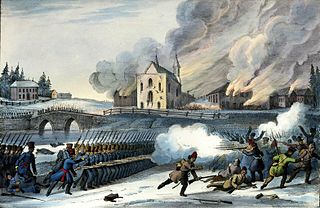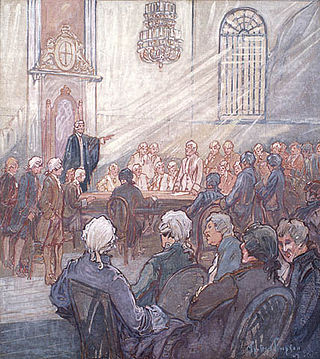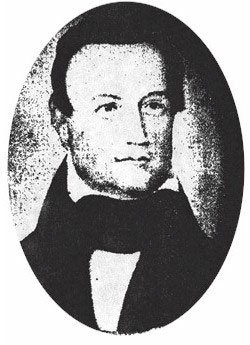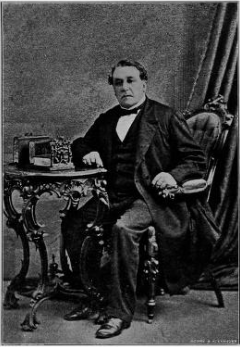History
| | This section is empty. You can help by adding to it. (July 2022) |
The 12th New Brunswick Legislative Assembly represented New Brunswick between December 28, 1837, and December 1, 1842.
The assembly sat at the pleasure of the Governor of New Brunswick John Harvey. William MacBean George Colebrooke became governor in April 1841.
Charles Simonds was chosen as speaker for the house.
| | This section is empty. You can help by adding to it. (July 2022) |
| Electoral District | Name |
|---|---|
| Saint John County | Charles Simonds |
| John R. Partelow | |
| John M. Wilmot | |
| John Jordan | |
| York | John Allen |
| James Taylor | |
| Lemuel A. Wilmot | |
| Charles Fisher | |
| Westmorland | William Wilson |
| William Crane | |
| Daniel Hanington | |
| Philip Palmer | |
| Kings | William McLeod |
| Samuel Freeze | |
| Queens | Hugh Johnston, Jr. |
| Thomas Gilbert | |
| Charlotte | Thomas Wyer |
| George S. Hill | |
| James Brown | |
| Robert Thomson | |
| Northumberland | Alexander Rankin |
| John Ambrose Street | |
| Sunbury | George Hayward, Jr. |
| Henry T. Partelow | |
| Kent | John W. Weldon |
| David McAlmon | |
| Gloucester | William End |
| Peter Stewart | |
| Carleton | Jeremiah M. Connell |
| Bartholomew C. Beardsley | |
| Saint John City | Thomas Barlow |
| Isaac Woodward |
Responsible government is a conception of a system of government that embodies the principle of parliamentary accountability, the foundation of the Westminster system of parliamentary democracy. Governments in Westminster democracies are responsible to parliament rather than to the monarch, or, in a colonial context, to the imperial government, and in a republican context, to the president, either in full or in part. If the parliament is bicameral, then the government is responsible first to the parliament's lower house, which is more representative than the upper house, as it usually has more members and they are always directly elected.

The Lower Canada Rebellion, commonly referred to as the Patriots' War in French, is the name given to the armed conflict in 1837–38 between rebels and the colonial government of Lower Canada. Together with the simultaneous rebellion in the neighbouring colony of Upper Canada, it formed the Rebellions of 1837–38.

This section of the Timeline of Quebec history concerns the events in British North America relating to what is the present day province of Quebec, Canada between the time of the Constitutional Act of 1791 and the Act of Union 1840.

The Territory of Wisconsin was an organized and incorporated territory of the United States that existed from July 3, 1836, until May 29, 1848, when an eastern portion of the territory was admitted to the Union as the State of Wisconsin. Belmont was initially chosen as the capital of the territory. In 1837, the territorial legislature met in Burlington, just north of the Skunk River on the Mississippi, which became part of the Iowa Territory in 1838. In that year, 1838, the territorial capital of Wisconsin was moved to Madison.

Events from the year 1838 in Canada.

The Rebellion Losses Bill was a controversial law enacted by the legislature of the Province of Canada in 1849. Its passage and subsequent royal assent by the Governor General, James Bruce, 8th Earl of Elgin makes the bill a landmark piece of legislation in Canadian political history.
The 13th Parliament of Upper Canada was opened 8 November 1836. Elections in Upper Canada had been held 20 June 1836. All sessions were held at Toronto.

Lieutenant-General Sir John Harvey, was a British Army officer and a lieutenant governor.

The Legislative Assembly of Lower Canada was the lower house of the bicameral structure of provincial government in Lower Canada until 1838. The legislative assembly was created by the Constitutional Act of 1791. The lower house consisted of elected legislative councilors who created bills to be passed up to the Legislative Council of Lower Canada, whose members were appointed by the governor general.

John Fairfield was an attorney and politician from Maine. He served as a U.S. Congressman, governor and U.S. Senator.
Bartholomew Crannell Beardsley was a lawyer, judge and political figure in Upper Canada and New Brunswick.

Patrick Noble was the 57th Governor of South Carolina from 1838 until his death in 1840.
Lemuel Allan Wilmot was a Canadian lawyer, politician, and judge.
William Crane was a merchant, judge and long-term elected provincial legislator in New Brunswick, Canada, serving from 1824–1842.He also was a member of the Legislative Council of New Brunswick from 1843–1850.
The 11th New Brunswick Legislative Assembly represented New Brunswick between January 20, 1835, and August 18, 1837.
The electoral districts of Lower Canada were territorial subdivisions of the British North American Province of Lower Canada serving as the basis of the representation of the population in the Legislative Assembly of Lower Canada, the lower house of the Provincial Parliament of Lower Canada. This house was the first legislative assembly in the history of Quebec. The districts were used between 1792 and 1838, date at which the constitution of the country was suspended as a consequence of the Rebellions of 1837.

The 1839—1840 United States Senate election in New York was held on February 5, 1839 and January 14, 1840. Incumbent Senator Nathaniel P. Tallmadge was re-elected to a second term in office over scattered opposition.

Mather Byles Almon was a Canadian banker, politician, and philanthropist.
The First Legislative Assembly of the Wisconsin Territory convened from October 25, 1836, to December 9, 1836, and from November 6, 1837, to January 20, 1838, in regular session. The Assembly also convened in special session from June 11, 1838, to June 25, 1838.